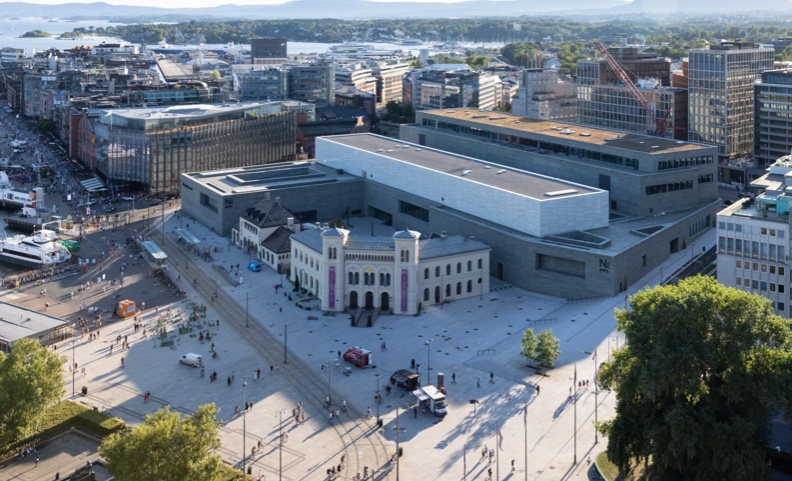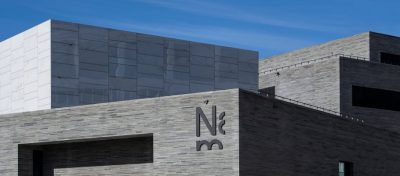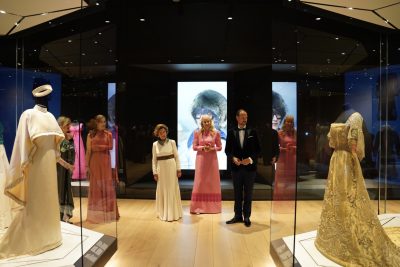Years of political quarrelling over location and cost were set aside during the weekend when Queen Sonja officially opened Norway’s new National Museum for Art, Architecture and Design. The building’s exterior has been compared to both a prison and a shopping center, but critics are impressed by what’s inside.

“Oslo is now home to the largest museum in the Nordic area,” Prime Minister Jonas Gahr Støre said at a formal dinner Friday night as opening ceremonies got underway. Even though Norway is “a small country,” he added, it’s “a proud nation,” and the museum is intended to be “a place and a home for everything we are and everything we can be.”

On Saturday Queen Sonja uttered a royal “Wow!” just before she cut a ceremonial ribbon outside the sprawling building at its long-delayed opening. She also picked up on the prime minister’s theme: “Today we’re getting a new home that invites us in … and tells the story of who we are.” She called it “enormous and intimate at the same time,” adding that “in its rooms, we are not alone.”
The new National Museum combines four former state museums, three of which have been shut down for several years: The much-loved National Gallery, the old Museum of Applied Arts (Kunstindustrimuseet), the Museum for Contemporary Art and the Norwegian Architecture Museum, all located in Oslo. The various closures over the past seven years sparked public outcry, followed by harsh criticism when the opening of the new National Museum suffered major delays, not only because of the Corona crisis.
The controversial process of merging them all into the new National Museum has actually taken 20 years and cost more than NOK 6 billion (around USD 800 million given various exchange rates along the way). It’s all involved great debate, criticism and not least a conflict between the museum’s architect, Klaus Schuwerk and the museum’s management.

Most all involved tried to brush that aside as the opening drew close and media coverage was massive. Schuwerk remained unhappy, still complaining to newspaper Dagsavisen and others that different and cheaper types of material were used in the building’s construction, that the facade and its new logo make it look like a shopping center, that the museum’s new Danish director is “arrogant” and that her management team refused to use his interior designs, furniture and flooring. He even claimed he was denied entry to the museum in May when he wanted to show some wealthy art collectors around the building. The museum responded that he had invited them without telling the museum and it was closed to such visits on the Saturday he’d chosen for security reasons.
Criticism also arose earlier this year when the museum announced its program for the next few years (some claimed it’s not “Norwegian enough”), and over some of the museum’s external partnerships and commercial collaborations. After pre-opening visits inside were offered to media, members of the museum’s support organization and many others, though, lots of the criticism not only quieted down, it was replaced with praise bordering on adulation.
“Now it’s okay to be thrilled!” headlined one review in Norway’s largest newspaper, Aftenposten. The public “is going to love it,” wrote another critic in Dagsavisen. “This is a place you can enter and simply lose yourself in for the entire day,” wrote yet another. The museum has won applause for its “fantastic functional qualities,” while most agree that it was a good idea to gather Norway’s national treasures into one new location with much more space to exhibit them and put them into context. In one example, the classic Norwegian painting Brudeferd i Hardanger (Bridal Procession on the Hardanger Fjord) is hung next to a vintage Hardanger bunad, the national costume appearing in Adolph Tidemand and Hans Gude’s icon from 1848.

Several have even admitted to getting tears in their eyes upon being reunited with art that hasn’t been on public view for years, and now seeing it much better displayed. The old National Gallery’s “Munch Room” is back in a new and improved status, showing off some of Edvard Munch’s most famous and well-known works including one of the four paintings of The Scream that’s on permanent display.
Other classics are also in place, including the large landscapes from the national romantic period of the late 1800s, as are expanded exhibits of Norwegian contemporary artists including Bjarne Melgaard and Sami artists including Maret Anne Sara.
Then come all the treasures from the former Museum of Applied Arts, including royal shoes and clothing over the years, ballgowns and fashion from Norwegian and international designers, porcelain, silver, furniture and other examples of design dating back to the Viking Age.

The new National Museum currently contains 6,500 works spread over 86 rooms and two floors, with thousands more waiting to be displayed as well. All told, the National Museum has around 400,000 items in its collections, with management promising how the public can soon see treasures they’ve never seen before.
“Many will feel that a visit to the museum is like coming home,” wrote commentator Mode Steinkjer in Dagsavisen. “The key to the new National Museum is that it’s built for the future to show both the past, the present and what will come in the years ahead. Norway’s national cultural heritage has finally come home.”
newsinenglish.no/Nina Berglund

